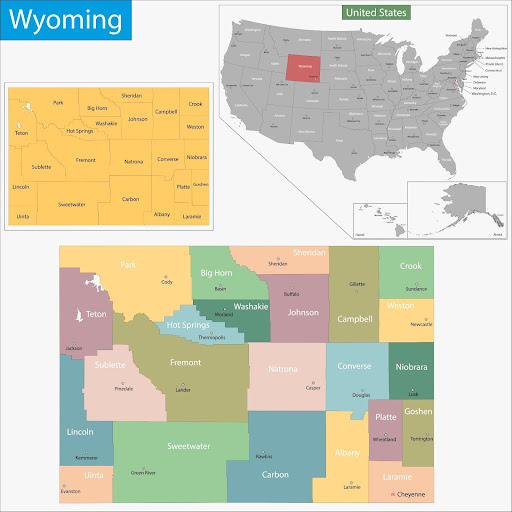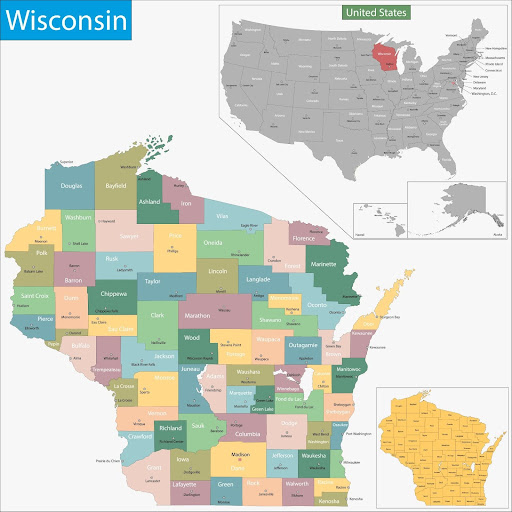Table of Contents
South Dakota doesn’t make national wildfire headlines often, but don’t mistake that for low risk. The western half of the state, especially the Black Hills, is one of the most fire-prone areas in the northern Plains. Add in steep terrain, heavy recreational traffic, and frequent red flag days, and fire investigators in this state need to stay sharp.
This guide maps out the wildland fire resources in South Dakota, with a focus on operational clarity for fire investigators. Whether you’re tracking a lightning strike in Custer State Park or untangling a human-caused ignition near a ranching operation on Bureau of Land Management (BLM) land, the details below will help you move efficiently and with authority.
Browse our wildland firefighting resources library to go further.
Live Incident Updates & Maps
Track current fire activity, smoke conditions, and red flag alerts using this tool:
State Overview
South Dakota is split in half, topographically and operationally. East of the Missouri River, it’s mostly flat plains and agricultural land. West of it? That’s where things heat up. The Black Hills region is a wildfire hotspot, with dense ponderosa pine forests, dry underbrush, and complex jurisdictional overlap.
- Black Hills & Custer Highlands: Steep, forested terrain with flammable timber and fast-spreading surface fuels. Frequent lightning strikes and human ignitions.
- Prairie & Grasslands (West-Central & Northwest SD): Flashy fuels, wind-driven spread. BLM and county agencies often lead suppression.
- Eastern South Dakota: Fire risk is lower but not absent, especially during spring melt or fall droughts.
- WUI Zones: Rapid City, Spearfish, and Hot Springs are surrounded by ignition-prone forestland. As development creeps outward, so does investigative complexity.
Wildfire Season Timeline
South Dakota’s fire season is short, but it can turn dangerous quickly, especially in the hills. Fire investigators here need to track seasonal wind patterns, regional droughts, and burn permit activity closely.
- Spring (March–May): Most active season. Dormant vegetation and high winds create ideal fire conditions, especially on the plains.
- Summer (June–August): Lightning strikes and recreational use increase wildfire risk. Fuels cure rapidly by late June in western zones.
- Fall (September–October): Fire potential rebounds if fall is dry. Prescribed burns and ag-related ignitions can escape during windy events.
Key State Agencies Involved
- South Dakota Wildland Fire Division (SDWF): Housed under the Department of Public Safety, SDWF is the lead state agency for wildfire suppression and investigation. They manage the state engine fleet, aviation contracts, and the Type 3 Incident Management Team. Fire investigators often work directly with SDWF’s Fire Management Officers (FMOs) and regional wildfire coordinators.
- South Dakota Department of Agriculture & Natural Resources (DANR): While not a suppression agency, DANR plays a critical role in fire mitigation, forest health, and private landowner outreach. They also support fuel reduction programs that can inform post-fire analysis.
- U.S. Forest Service: Federal fires within the Black Hills follow NWCG investigation protocols. Joint investigations with SDWF are common on shared lands.
- Bureau of Land Management: Responsible for over 275,000 acres in the western part of the state. BLM law enforcement and fire personnel handle the initial investigation but may collaborate with SDWF and local agencies.
- Tribal Authorities: Multiple reservations (e.g., Pine Ridge, Cheyenne River) have their own fire crews and jurisdiction. Investigators working cross-boundary cases must coordinate with BIA and tribal fire management.
Local Wildland Firefighting Resources
Local fire departments and county agencies play a critical role in initial attack, especially outside the Black Hills. Many departments west of the Missouri River have red card-certified personnel and are integrated into the Great Plains Fire Coordination framework.
Expect varied capacity in eastern counties, where structural fire departments may lack wildland gear or experience.
List of Local/State/Federal Fire Response Agencies
- South Dakota Wildland Fire Division (SDWF): Manages statewide wildland fire suppression, aviation assets, IMTs, and investigations.
- County Fire Departments & Sheriff’s Offices: Most counties west of the Missouri have formal wildfire SOPs. Fire chiefs and sheriffs may lead or assist with ignition interviews, especially in agricultural areas.
- Federal Agencies (USFS, BLM, BIA): Each manages suppression and investigation on lands under their control. Cross-agency cooperation is standard during large incidents.
- Tribal Fire Programs: Reservations maintain independent wildland fire crews. Coordinate early with tribal agencies or the BIA when fires originate or spread across tribal lands.
Contact Numbers and Emergency Links
- To Report a Wildfire: Dial 911
- SD Wildland Fire Dispatch: (605) 393-8011
- Black Hills Fire Info: https://www.fs.usda.gov/blackhills
- Northern Rockies Coordination Center (NRCC): https://gacc.nifc.gov/nrcc
- South Dakota Burn Permits: https://wildlandfire.sd.gov/burnpermits
Training & Volunteering
South Dakota maintains a robust training structure through SDWF and federal partnerships. NWCG certification is available through regional academies and state-coordinated events.
NWCG-Approved Academies and Centers
Volunteer and Seasonal Training Opportunities
- Emergency Firefighter (EFF) Program: SDWF hires and trains seasonal firefighters for suppression support. Some serve on Type 2 IA crews or assist with mop-up and patrol.
- County & Tribal Fire Department Training: Local departments often host joint wildland fire training with SDWF and federal partners. Investigators benefit from participating in these refreshers by staying aligned with response SOPs.
- Prescribed Burn Associations: Several rancher-led burn cooperatives in western South Dakota conduct annual training and burns. These groups are valuable sources of intel for escaped fire investigations.
Stay Informed on South Dakota’s Wildland Fire Landscape
South Dakota’s wildfire risk is growing, not just in the Black Hills, but across ranchlands and agricultural areas, too. As drought cycles intensify and recreational use expands, fire investigators need to stay on top of changing fuel conditions, permit violations, and mutual aid structures.
Learn the burn windows. Know who issued the last permit. And don’t ignore the wind forecast, because in this state, it only takes one spark and one gust to turn a trash pile into a thousand-acre incident.
FAQs
Who investigates wildfires in South Dakota?
SDWF leads investigations on state and private lands. Federal agencies (USFS, BLM, BIA) handle federal land. Local fire departments or sheriffs may participate, especially in agricultural or criminal cases.
Can I burn brush or conduct a prescribed burn?
Yes, but a burn permit from SDWF is required in most areas, especially during fire season. Check daily fire danger ratings before ignition.
Where can I get NWCG wildfire training in SD?
Start with the SDWF training calendar or contact the Great Plains Fire Zone. Many courses are hosted in Rapid City or through regional partners.










